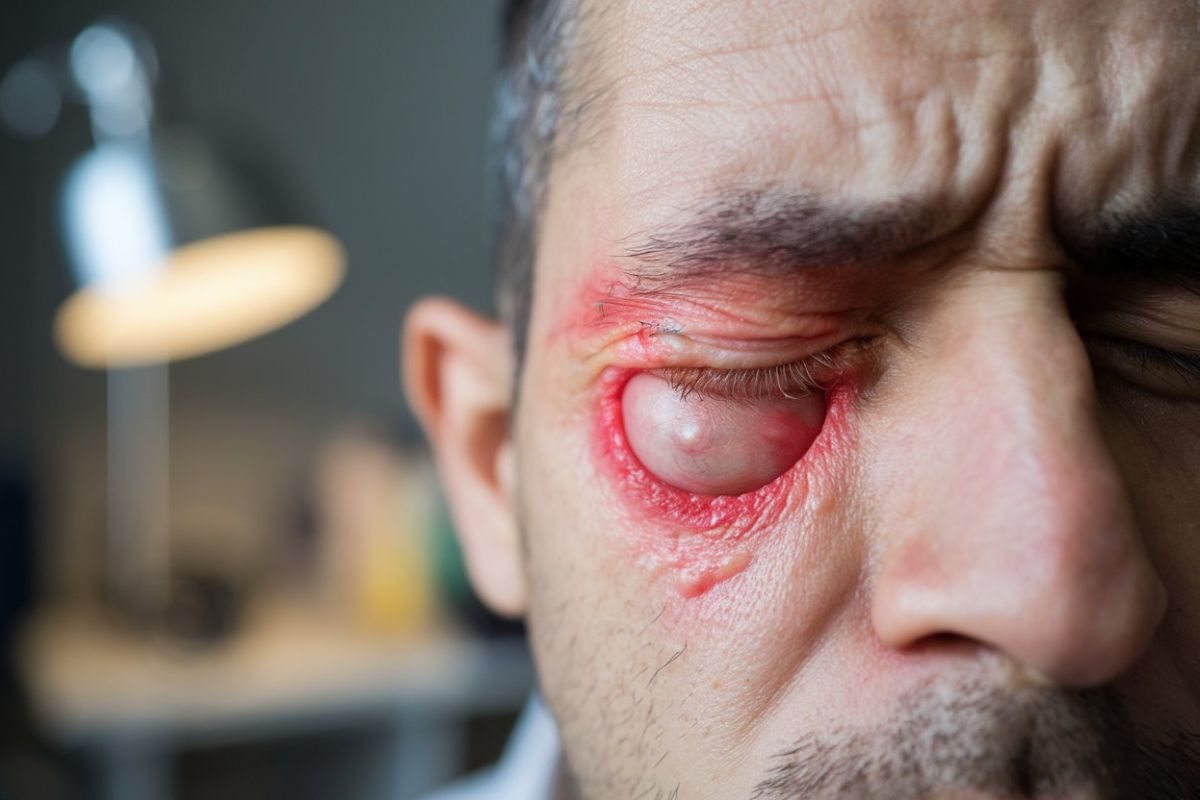
What is Parinaud's Oculoglandular Syndrome? Parinaud's Oculoglandular Syndrome (POGS) is a rare eye condition that usually affects one eye, causing redness, irritation, and pain. It often comes with swollen lymph nodes near the affected eye. The most common cause is cat-scratch disease, which is triggered by the bacterium Bartonella henselae. This bacterium can be transmitted through hand-to-eye contact or from an open wound contaminated with cat flea feces. Other causes include infections like tularemia, sporotrichosis, and tuberculosis. Early diagnosis and treatment are crucial for a good outcome. Understanding the symptoms, causes, and treatments can help manage this condition effectively.
Key Takeaways:
- Parinaud's Oculoglandular Syndrome is a rare eye condition caused by infections like cat-scratch disease. It leads to red, irritated eyes, fever, and swollen lymph glands, and can be diagnosed through clinical findings and lab tests.
- Preventing and treating Parinaud's Oculoglandular Syndrome involves avoiding cat scratches, practicing proper hygiene, and using antibiotics, antifungal, or antiviral medication. The prognosis varies depending on the underlying cause and the patient's overall health.
What is Parinaud's Oculoglandular Syndrome?
Parinaud's Oculoglandular Syndrome (POGS) is a rare eye condition that often puzzles both patients and doctors. It typically affects one eye and involves nearby lymph nodes. Let's dive into some fascinating facts about this intriguing syndrome.
-
Definition and Manifestation
Parinaud's Oculoglandular Syndrome is a conjunctival disease that shows up as unilateral granulomatous follicular conjunctivitis with ipsilateral regional lymphadenopathy. This means it usually affects one eye, causing redness, irritation, and pain. -
Etiology
The most common cause of POGS is cat-scratch disease, caused by the bacterium Bartonella henselae. This bacterium is often transmitted through hand-to-eye contact or from contamination of an open wound with cat flea feces. -
Incubation Period
The incubation period for POGS ranges from 3 days to 3 weeks. This period is crucial for early diagnosis and treatment.
Symptoms of Parinaud's Oculoglandular Syndrome
Understanding the symptoms can help in early detection and treatment. Here are the key symptoms to look out for:
-
Red, Irritated Eye
The affected eye appears red and irritated, often resembling conjunctivitis or "pink eye". -
Fever
Patients often experience fever, which can range from mild to high. -
General Ill Feeling
A general lack of well-being is common among patients with POGS. -
Swollen Lymph Glands
Swelling of nearby lymph glands, particularly in front of the ear, is a hallmark symptom. -
Increased Tearing
Some patients may experience increased tearing.
Ocular Signs and Lymphadenopathy
The eye and lymph nodes show specific signs that are crucial for diagnosis.
-
Conjunctival Ulceration
Ulcers may form over granulomas on the conjunctiva. -
Conjunctival Nodules
Nodules may appear on the inside of the eyelid or the white part of the eye. -
Corneal Ulceration
Rarely, peripheral corneal ulceration may occur. -
Lymphadenopathy
Patients typically develop tender lymphadenopathy in pre- or post-auricular, submandibular, or cervical lymph nodes.
Diagnostic Methods
Diagnosing POGS involves a combination of clinical findings and laboratory tests.
-
Symptoms and Clinical Findings
The diagnosis is primarily based on symptoms and clinical findings. -
Serology
Blood tests to check for antibodies against the causative organisms are commonly used. -
Culture and PCR Tests
Laboratory culture and PCR tests may be employed to identify the causative agent.
Prevention and Treatment
Preventing and treating POGS involves several strategies.
-
Avoiding Cat Scratches
Avoiding scratches from cats, especially kittens, can reduce the risk of developing POGS. -
Proper Hygiene
Practicing proper hygiene when handling cats can also reduce the risk. -
Antibiotics
Antibiotics may be prescribed if the cause is bacterial, such as cat-scratch disease. -
Antifungal Medication
Antifungal medication may be used if the cause is fungal, such as sporotrichosis. -
Antiviral Medication
Antiviral medication may be used if the cause is viral, such as herpes simplex virus. -
Surgery
In rare cases, surgery may be necessary to clean away infected tissues.
Prognosis and Complications
The outcome and potential complications of POGS can vary.
-
Prognosis
The prognosis for POGS varies depending on the underlying cause and the patient's overall health. -
Cat-Scratch Disease
The prognosis is generally excellent with early treatment. -
Other Causes
The prognosis can be variable and may depend on the effectiveness of treatment for the specific underlying cause. -
Complications
Serious complications are rare but can include conjunctival nodules forming sores and infection spread.
Historical Context and Case Reports
Understanding the history and documented cases can provide deeper insights into POGS.
-
History of the Syndrome
Parinaud's Oculoglandular Syndrome was first described by French ophthalmologist Henri Parinaud in 1889. -
Early History
The early history of the syndrome was discussed in detail by Cassady and Culbertson in 1953. -
Case Reports
Case reports have been instrumental in understanding the diverse manifestations of POGS.
Other Causes and Diagnostic Challenges
POGS can be caused by various infections, making diagnosis challenging.
-
Rickettsial Infections
Rickettsial infections such as Rickettsia conorii and Rickettsia typhi/felis can also cause POGS. -
Fungal Infections
Fungal infections such as sporotrichosis can cause POGS. These infections are typically acquired through skin contact with contaminated soil or organic matter.
Final Thoughts on Parinaud's Oculoglandular Syndrome
Parinaud's Oculoglandular Syndrome (POGS) is a rare but fascinating condition. It usually shows up as a red, irritated eye and swollen lymph nodes, often caused by cat-scratch disease. Early diagnosis is key, as symptoms can mimic other eye infections. Treatment varies depending on the cause, ranging from antibiotics for bacterial infections to antifungal or antiviral medications.
Preventing POGS involves simple steps like avoiding cat scratches and practicing good hygiene. While complications are rare, they can be serious, so seeing a healthcare provider early is crucial. Understanding the syndrome's history, symptoms, and treatment options can help manage it effectively.
In summary, POGS may be uncommon, but knowing the facts can make a big difference in outcomes. Stay informed, stay healthy, and keep an eye out for those symptoms.
Frequently Asked Questions
Was this page helpful?
Our commitment to delivering trustworthy and engaging content is at the heart of what we do. Each fact on our site is contributed by real users like you, bringing a wealth of diverse insights and information. To ensure the highest standards of accuracy and reliability, our dedicated editors meticulously review each submission. This process guarantees that the facts we share are not only fascinating but also credible. Trust in our commitment to quality and authenticity as you explore and learn with us.


